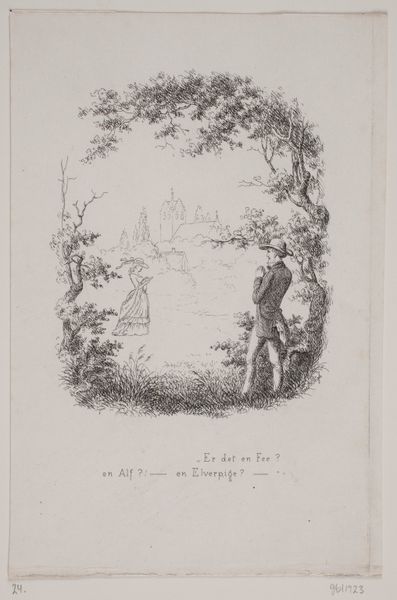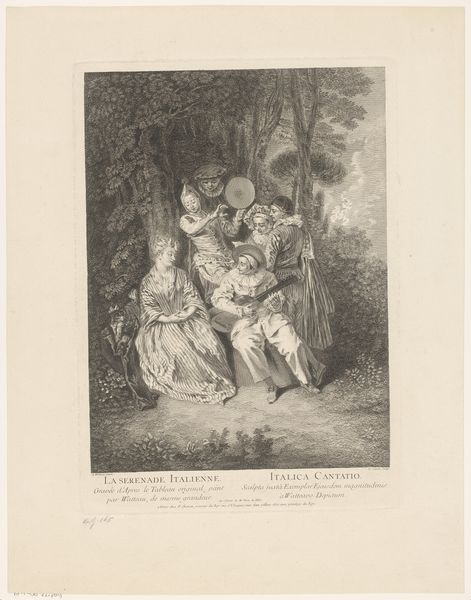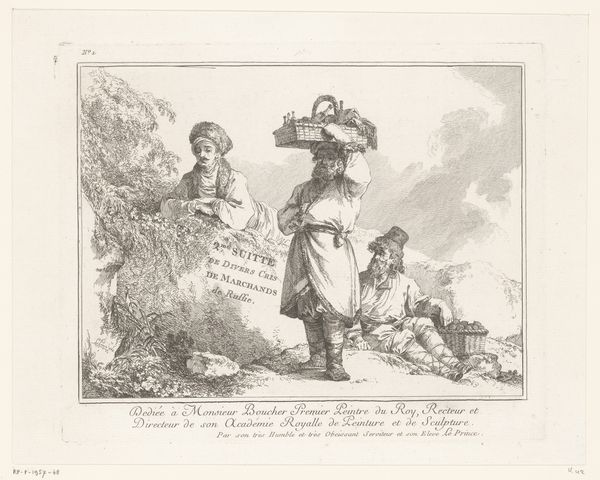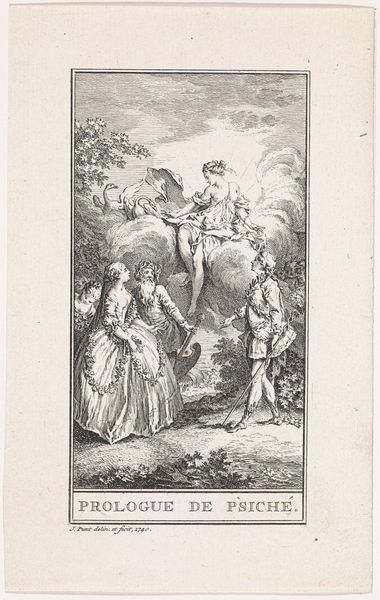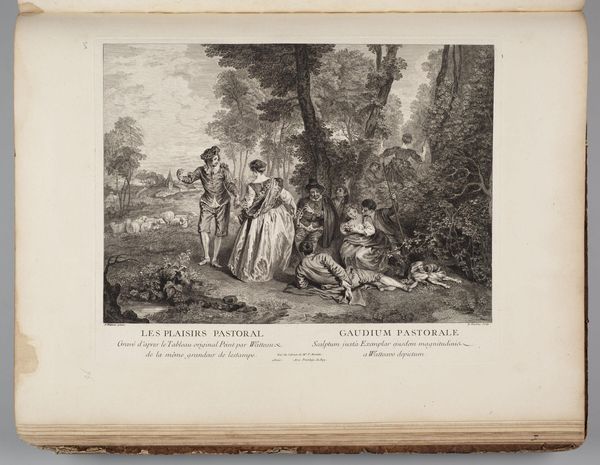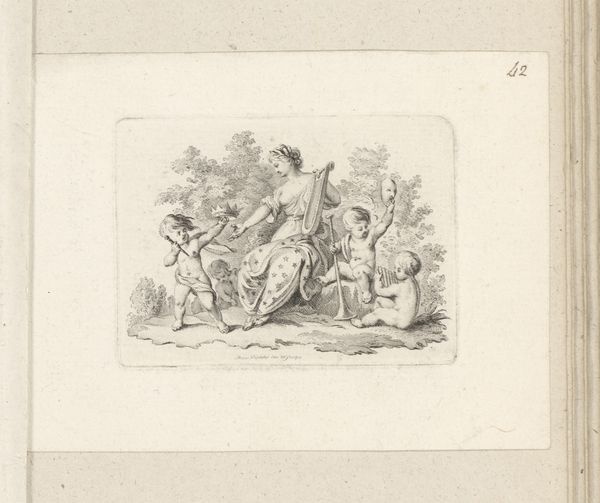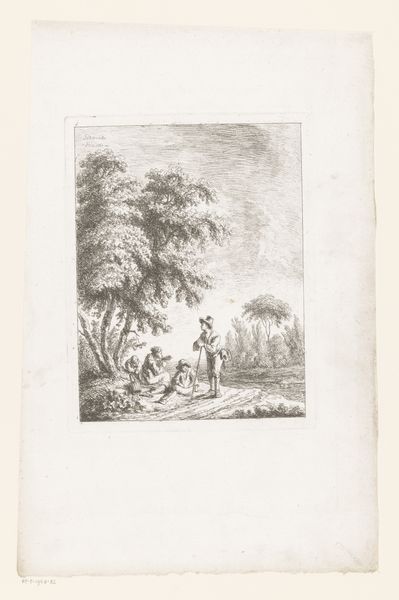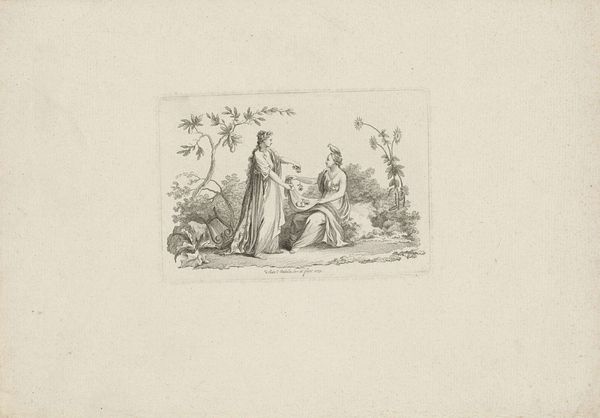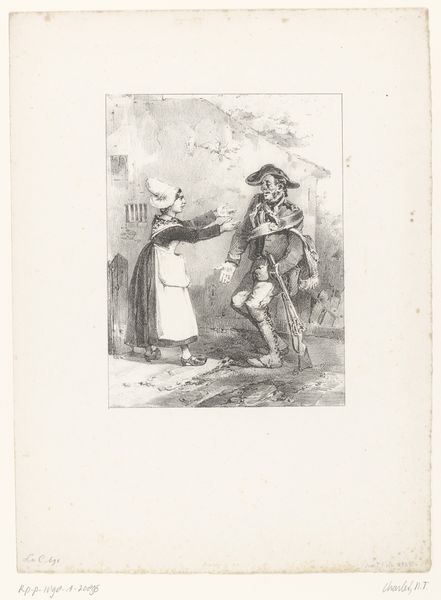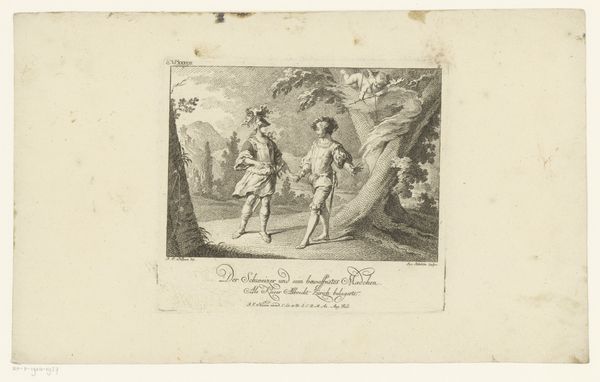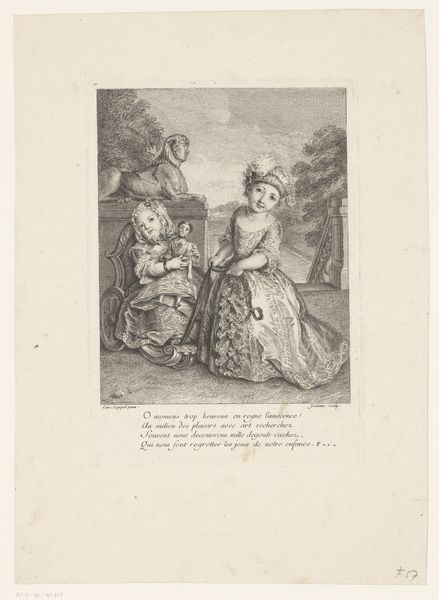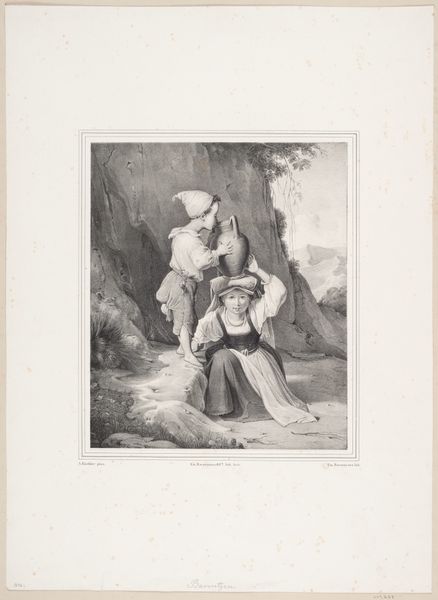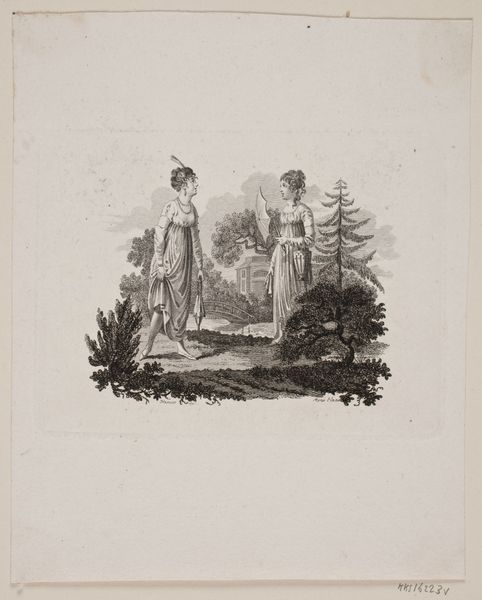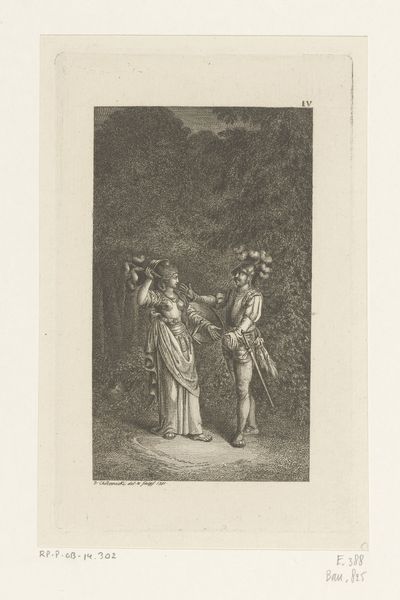
Dimensions: 170 mm (height) x 117 mm (width) (bladmaal)
This illustration, made by Carl Bøgh sometime in the 19th century, is an example of printmaking - specifically, etching. The artist would have covered a metal plate with a waxy, acid-resistant coating called a ground. Using a sharp needle, they would then scratch away lines of the composition, exposing the metal underneath. Immersing the plate in acid would bite into these lines, creating grooves. The plate is then inked, and the surface wiped clean, leaving ink only in the etched lines. Finally, damp paper is pressed against the plate, transferring the image. The resulting print reveals the artist's hand at work, the delicate linework capturing details of clothing, figures, and landscape. Note the way the hatching suggests shadows and textures, and the skilled use of line thickness to convey depth. This print, like many others of the time, played a crucial role in disseminating images and ideas, offering a relatively affordable way for people to own and share art. Appreciating the material process behind it allows us to connect with the printmaker’s skill, and the wider world of 19th-century visual culture.
Comments
No comments
Be the first to comment and join the conversation on the ultimate creative platform.
